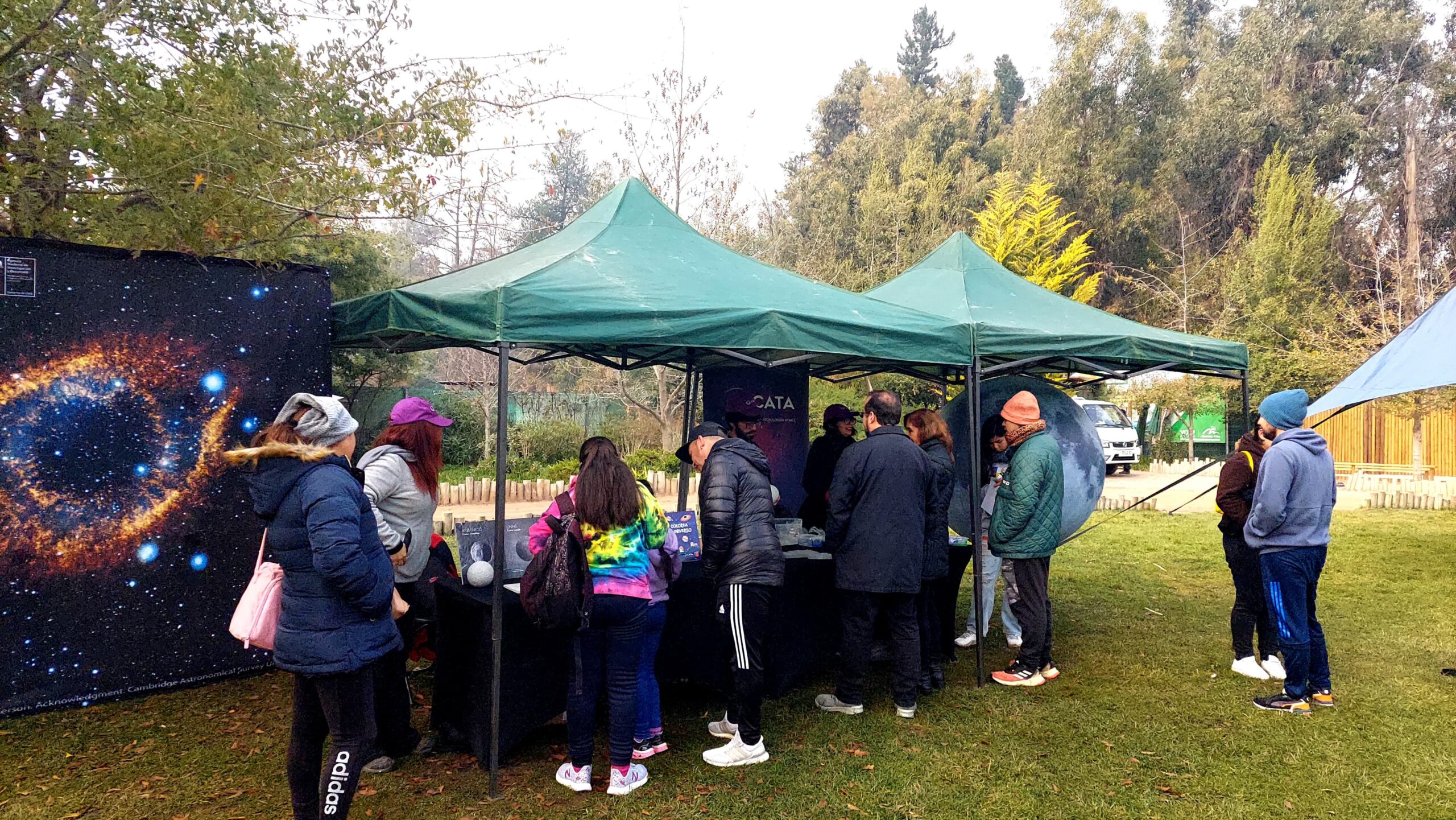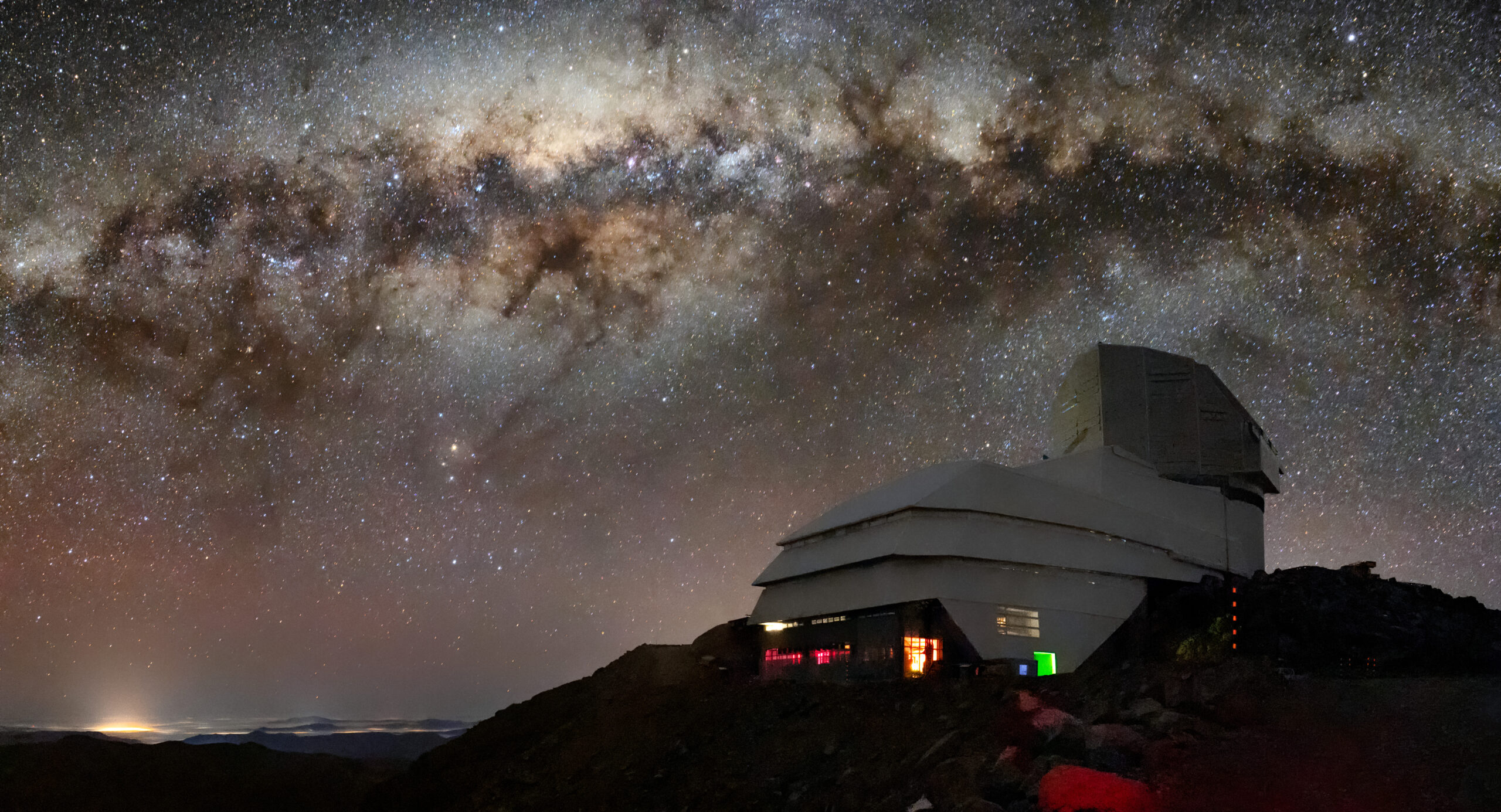
The challenges and benefits of organizing the IAU General Assembly in Chile
The election of our country as host of the General Assembly of the International Astronomical Union, to be held in 2030, is an ideal opportunity to generate greater momentum for astrophysical research in Chile, make local researchers visible and ratify the country as the capital of world astronomy. In addition, in the last version of this meeting, held this month in South Africa, CATA Associate Researcher Mónica Rubio was elected as Vice-President of the IAU.
One of the most relevant news for local astronomy was revealed during the General Assembly of the International Astronomical Union held in South Africa, when it was announced that Chile will host this meeting, the most important worldwide, in the version to be held in 2030.
Mónica Rubio, Associate Researcher at the Center for Astrophysics and Related Technologies (CATA) and winner of the 2021 National Exact Sciences Award, was elected as Vice-President of this organization, which brings together more than 13,000 researchers from over 90 countries.
“It is with great honor and excitement because it is the world’s leading organization committed to the promotion and advancement of astronomy globally. Assuming this new role as Vice President of the IAU fills me with enthusiasm, as it represents a unique opportunity to continue contributing to the development of astronomy on an even larger scale. Previously, I had the opportunity to promote this development as President of one of the nine divisions of the IAU (Division H: Interstellar Medium and Local Galaxies), and as President of the Chilean Astronomical Society, on two occasions. From this new position, I hope to continue promoting initiatives that strengthen scientific research and promote greater international collaboration in astronomy. It also marks a significant milestone for the Chilean scientific community, as I will become the first Chilean woman to become a member of the UAI Executive Committee”, says the researcher from the Universidad de Chile.
Precisely this astronomer was part of the team that worked on the application of our country to hold the General Assembly, which had the support of SOCHIAS, the Ministry of Science, DECITY, the Ministry of Foreign Affairs, CATA and Imagen País, among several other organizations.
“Chile has reached an internationally recognized level of development in astronomy, with exponential growth in the last 20 years. Therefore, it was natural that we wanted to host this important meeting. This great achievement, where I also had the support of Carolina Agurto, Julio Carballo and Bruno Dias, from SOCHIAS, allows us to give the opportunity to know the discoveries made by Chilean researchers. In addition, it will promote the development of Latin American astronomy, giving the possibility for many colleagues from the region to attend, show their work and establish collaborations. It is not easy for colleagues, young astronomers and astronomers, and students from our region to attend these international events, and the fact that this General Assembly will be held in Chile is a great opportunity”, says Mónica Rubio.
A view shared by Ezequiel Treister, Director of CATA. “It will be a perfect opportunity for students, postdocs and professors to present their work and expose their research to world leaders who visit us, and thus have greater visibility. It is very positive for our institutions and universities to be able to show themselves to the world. This will also allow us to receive more international students and open new scientific collaborations. So, certainly for research in particular it is very positive. I just saw it in South Africa, at this year’s Assembly, where I had the incredible opportunity to participate. It is impressive what I learned and what I saw of the development of astrophysics there and how it was enhanced by the organization of this event”.
In this sense, he adds that we have just organized the Pan American Games and, although this is now a scientific event, it is just as relevant and will potentially be very positive for the country’s image.
An achievement, but a great challenge
Although Chile is recognized as the “capital” of astronomy, bringing together the most important scientists in the field is a privilege and a great challenge.
“It means that in six more years all the eyes of the world’s astronomy will be on Chile. A large part of the world astronomical community will visit us, including Nobel Prize winners, observatory directors and heads of institutes from different countries. It is a very big logistical and financial challenge. We hope to provide scholarships to as many students as possible and that participants from developing countries, with less socioeconomic access, can come, so it is a huge challenge,” says Ezequiel Treister, who is also a researcher at the Catholic University.
Holding the IAU General Assembly in Chile also implies an attractive challenge for CATA, since it can take advantage of its institutional framework to promote planning and development.
“CATA can play a very important role for us to present our scientific development to the world, along with aspects such as technology transfer, linkage with the environment, outreach and astro-tourism. CATA has a solid institutional framework, a corporation already formed and an excellent administrative team, so I believe we can lend a lot of help and collaboration to the challenge of organizing this great meeting”, argues the Director of the Center.
This is something that Mónica Rubio emphasizes. “For me, the most important thing is to have a strong and collaborative group that faces this challenge together with the authorities and ministries involved. This event requires professional support to organize it and, therefore, it is fundamental and essential to have the necessary funding. In addition, the role of CATA will be very important in its organization and I am very pleased that it has participated in the entire application process. I am sure that we will have the support of the Center’s researchers, as well as the support they can give us in other areas, such as outreach, the preparation of parallel activities and exhibitions where scientific achievements, the development of astronomical instrumentation and technology transfer carried out in Chilean universities and institutes will be exhibited”.
The General Assembly of the International Astronomical Union is the most important meeting in the world and has been held every three years since 1922. It brings together, for two weeks, professionals and researchers from around the world to discuss the future of astronomy, new instruments and telescopes (available and to be implemented) and the collaborations needed to advance the study of this area. There are special sessions dedicated to the latest discoveries, outreach, public talks, scientific, cultural and tourist events. In addition, as indicated by President Gabriel Boric, when announcing the meeting, by 2030, 55% of the world’s astronomical observation will be carried out based on the instruments and telescopes installed in Chile.
Recent news
-
 Publicado el: 09/07/2025Patricia Tissera is recognized as full professor by the Pontificia Universidad Católica de Chile
Publicado el: 09/07/2025Patricia Tissera is recognized as full professor by the Pontificia Universidad Católica de Chile -
 Publicado el: 04/07/2025CATA researchers among the best in Chile according to international ranking Research.com
Publicado el: 04/07/2025CATA researchers among the best in Chile according to international ranking Research.com -
 Publicado el: 30/06/2025CATA Director strengthens ties in her second institutional tour
Publicado el: 30/06/2025CATA Director strengthens ties in her second institutional tour -
 Publicado el: 30/06/2025CATA celebrated Asteroid Day 2025 at the Pueblito de Las Vizcachas Park
Publicado el: 30/06/2025CATA celebrated Asteroid Day 2025 at the Pueblito de Las Vizcachas Park -
 Publicado el: 26/06/2025Vera C. Rubin: the telescope that watches the sky and anticipates the future of astronomy
Publicado el: 26/06/2025Vera C. Rubin: the telescope that watches the sky and anticipates the future of astronomy
Categories list
- Acknowledgments 20
- Astrobiology 5
- AstroCluster 1
- Black holes 13
- Corporativo 49
- Cosmology 4
- Descubrimientos 19
- Disclosure 46
- Exoplanets 13
- Extension 4
- Galaxies 17
- Galaxies formation 2
- Inter y Transdisciplina 2
- Local Universe 13
- Publications 5
- Sin categorizar 31
- Solar System 11
- Stellar formation 6
- Technology 9
- Technology Transfer 12